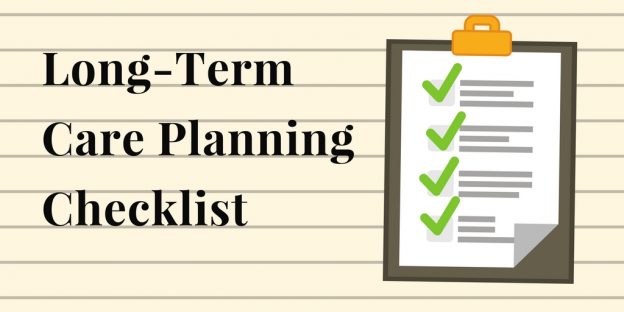
The loss of a spouse can be a devastating, life-changing event. Due to longer life expectancies, women are more likely to face this situation. According to the U.S. Census Bureau’s 2015 Current Population Survey, approximately 34% of women age 65 and older are widows compared to approximately 12% of men.
Becoming a widow at any age can be one of the most difficult challenges a woman must face. Not only is there the emotional loss of a spouse, but also the task of handling everything–including all the finances–without the help of a spouse.
Even if you’ve always handled your family’s finances, the number of financial and legal matters that have to be settled in the weeks and months following your loved one’s death can be overwhelming.
Sadly, for many women, becoming a widow is a first step toward economic hardship. That’s why it’s critical for you to organize your finances after your spouse’s death and take ongoing steps to secure your financial future and that of your family.
First, take a deep breath
Before you start handling the financial end of things, though, make sure to consider your own needs. The period following the death of a spouse can be a blur of emotions–shock, sadness, despair, anger, denial. It’s important to allow yourself the freedom to feel however you want to feel. You don’t owe it to anyone to feel or act in a certain way.
Facing your loss can ultimately help you as you work to adapt to the new conditions of your life, so that in time you can create something new. This period of adjustment, which can last for several years, is often a time of profound self-discovery for women, who may find themselves examining issues of identity, life meaning, and aging.
During this time, it’s important to surround yourself with people you trust–family, friends, support groups, professionals–who can offer support and advice that’s in your best interest.
The short term: steps to take
There are several financial tasks that must be done in the weeks and months after a spouse’s death. If some matters are too overwhelming to tackle alone, don’t hesitate to ask family or friends for help.
Locate important documents and financial records.
In order to settle your spouse’s estate, you’ll need to locate a number of important documents. These include your spouse’s will and other estate planning documents (e.g., trust), insurance policies, bank and brokerage statements, stock and bond certificates, deeds, Social Security number, birth and marriage certificates, and certified copies of the death certificate.
Set up a communications tracking and filing system.
To help keep track of all the details, set up a system to record incoming and outgoing calls and mail. For phone calls, keep a notebook handy where you can write down the caller’s name, date, and subject of the call. For mail, keep track of what you receive and whether a response is required by a certain date.
Make a list of the names and phone numbers of the people and organizations you’re dealing with and post it in a central location. Finally, create a filing system for important documents and correspondence with separate folders for different topics–i.e., insurance, government benefits, tax information, bank records, estate records, and so on.
Seek professional advice to settle the estate and file tax returns.
Getting expert help from an attorney, accountant, and/or financial and tax professional can be invaluable during this stressful time. Consider bringing a family member or friend with you to meetings so you will have an extra pair of eyes and ears to process information.
An attorney can help you review your spouse’s will and other estate planning documents and start estate settlement procedures. If you are named executor in the will (or if you are appointed as the personal representative), you will be responsible for carrying out the terms of the will and settling the estate
Settling the estate means following certain legal and administrative procedures to make sure that all debts of the estate are paid and that all assets are distributed to the rightful persons. An attorney can tell you what procedures to follow. A tax professional can help you file certain federal and state tax returns that may be due.
A financial professional can help you by conducting a comprehensive review of your financial situation and identifying any retirement and survivor’s benefits that may be available to you.
Apply for benefits. You’ll need to contact several institutions for information on how you can file for benefits.
- Life insurance–Life insurance benefits are not automatic; you have to file a claim for them. This should be one of the first things you do. Ask your insurance agent to begin filing a claim (if you don’t have an agent, contact the company directly). Most claims take only a few days to process.
- Social Security Administration (SSA)–Contact the SSA to see if you and/or your dependent children are eligible to file a claim for retirement, survivor, or death benefits.
- Employers–Contact your spouse’s most recent and past employers to find out if you are eligible for any company benefits. If your spouse was a federal, state, or local employee or in the military, you may be eligible for government-sponsored survivor’s benefits.
Update account names.
You may need to contact financial institutions to change account names and/or update contact information.
Evaluate short-term expenses.
You may have immediate expenses to take care of, such as funeral costs or outstanding debts your spouse may have incurred. If you’re waiting for insurance proceeds or estate settlement money, you can use credit cards for certain expenses or you can try to negotiate with creditors to allow you to postpone payment for 30 days or more, if necessary.
Make sure you have one or more credit cards in your name, and when you can, order a free copy of your credit report and review it for accuracy.
Avoid hasty decisions.
For discretionary financial decisions, go at your own pace, not someone else’s. For example, don’t commit to move from your current home until you can make a decision based on reason instead of emotion.
Don’t spend money impulsively. Don’t cave in to pressure to sell or give away your spouse’s possessions. Find out where you stand financially before you make any large purchases, sell property, or loan money to others.
Moving ahead: the big picture
After the initial legal and financial matters related to your spouse’s death are taken care of, you’ll enter a transition phase when you’ll be adjusting to your new financial circumstances. As you navigate this terrain, you might find it helpful to work with a financial professional who can help you by:
- Suggesting ways to invest any life insurance proceeds or estate settlement money you receive
- Calculating your net worth by identifying your assets and liabilities, giving you an understanding of how you’ll meet your short- and long-term spending needs
- Establishing a budget by looking at your monthly income and routine living expenses, and making adjustments as needed
- Helping you update beneficiary designations on your life insurance, retirement plan, IRA, employee benefits, annuity, and so on
- Reviewing your investment portfolio at least annually
- Updating your estate planning documents (e.g., will, trust, health-care directives, power of attorney) to reflect your circumstances and your wishes for disposition of the marital estate (e.g., gifts to children, grandchildren, charities)
- Updating your insurance coverage to reflect your new circumstances
Generally speaking, women may have a different set of expectations and requirements from their financial professional than men. As you work with a financial professional, make sure he or she is responsive to what you say you need, not what your advisor thinks you want. Don’t be afraid to ask questions, and make sure you understand all your options before making important decisions.
As you move forward with your life, remember that at times it may be two steps forward and one step back. Take comfort in the fact that you are doing the best you can to make the best decisions–financial and otherwise–for yourself and your family.
Important Disclosure










